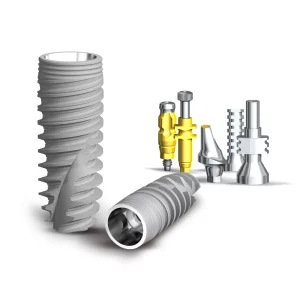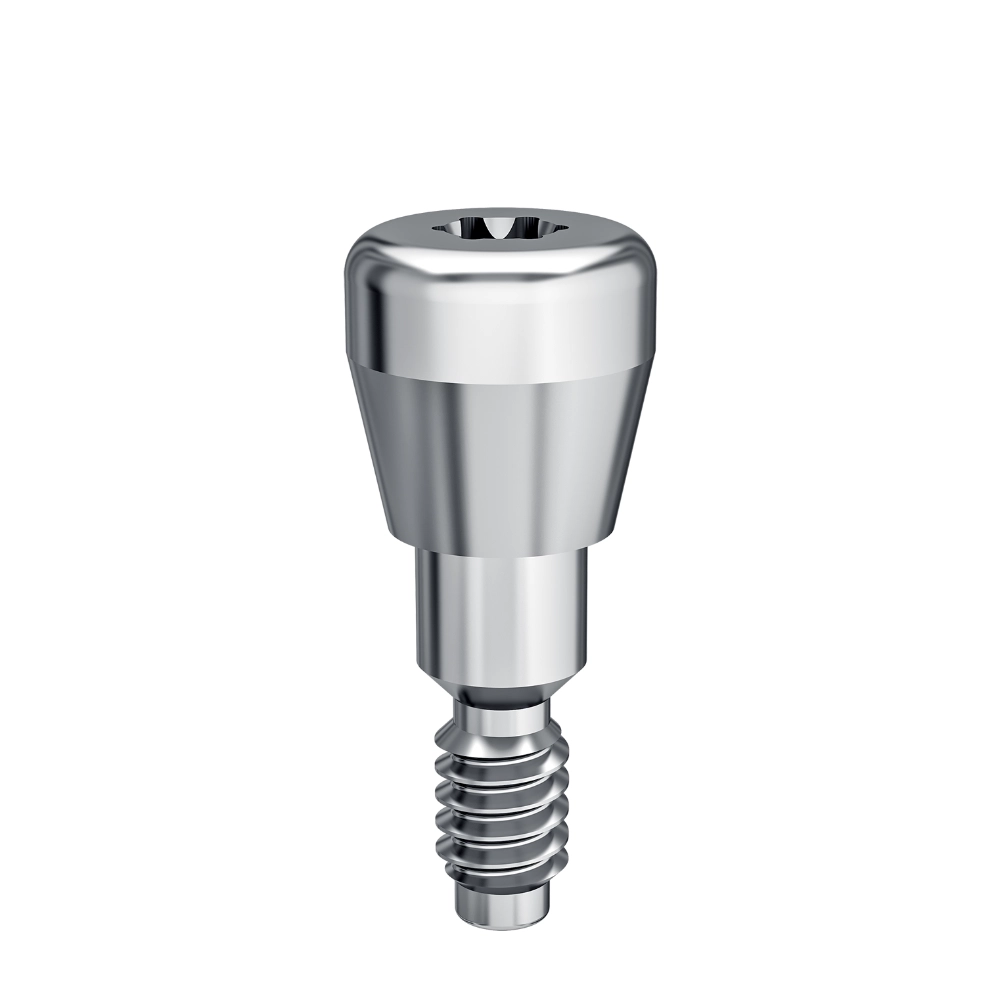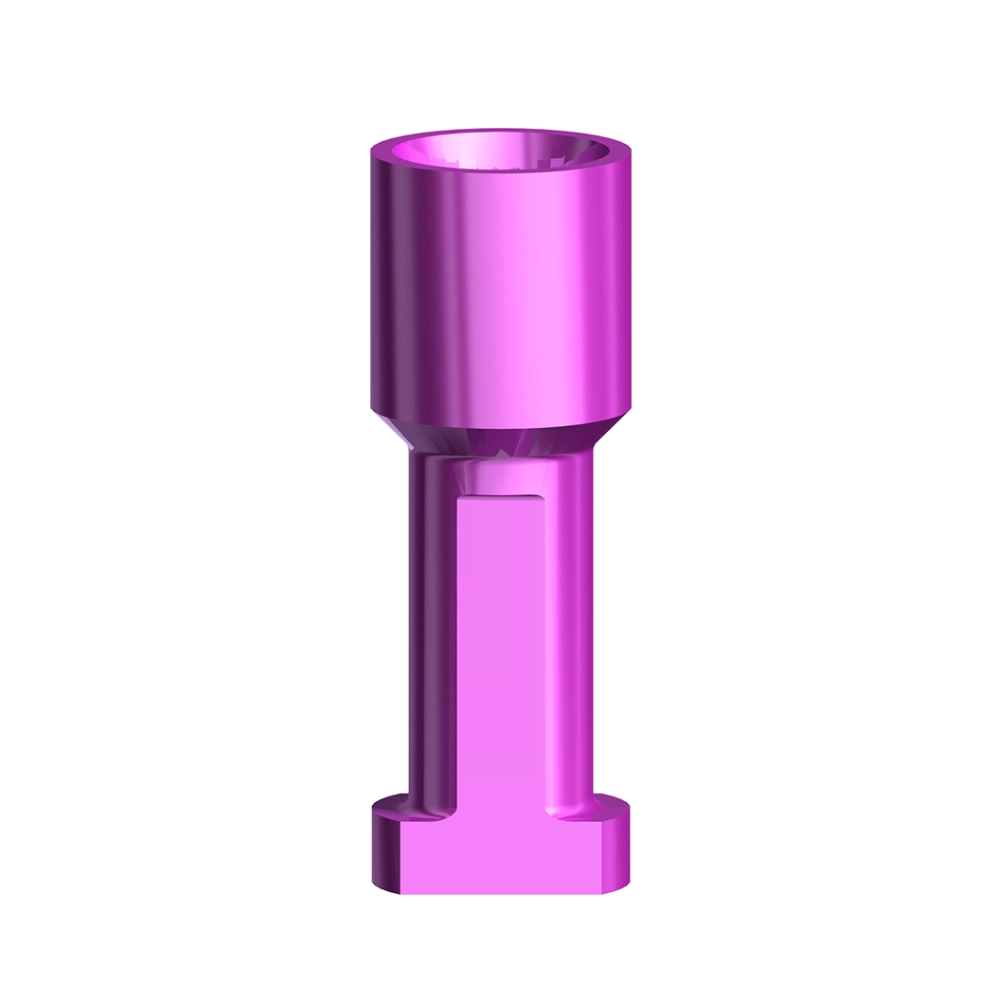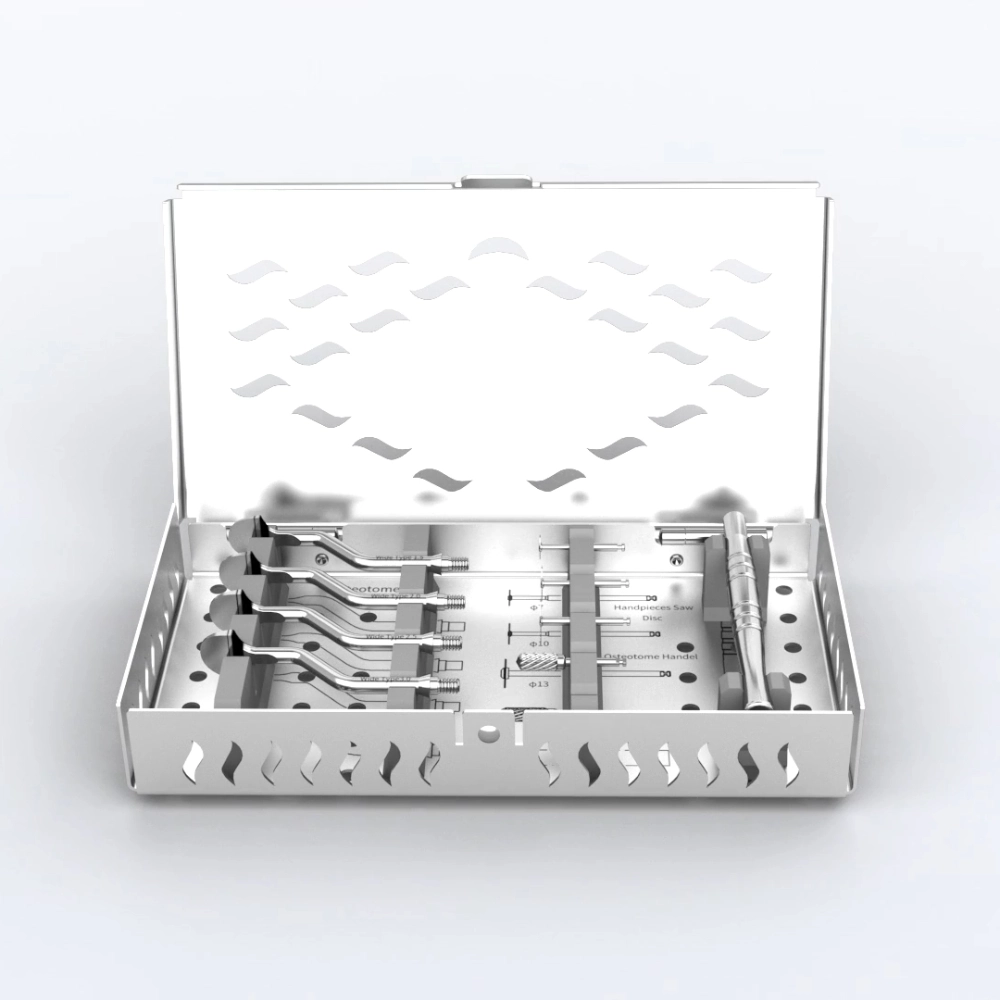
As advancements in dental technology continue to evolve and public expectations for orthodontic outcomes rise, traditional orthodontic methods often struggle to address complex malocclusions due to insufficient anchorage control and limited mechanical efficiency. Bone screw orthodontics, as a groundbreaking innovation in modern orthodontics, establishes an independent “absolute anchorage” system by directly integrating mini-screws with the alveolar bone. This approach not only overcomes the limitations of traditional anchorage dependence but also provides a scientifically sound and biomechanically stable solution for complex cases. The widespread adoption of this technology represents a fundamental transformation in orthodontic treatment principles and serves as a key driver in advancing the field toward greater precision and personalization.
So, how exactly does bone screw orthodontics reshape clinical orthodontic paradigms? What is its core value, and how does it align with policy-driven oral health demands? We explore these questions in this article.
What Are Bone Screws in Orthodontics?
Bone screw orthodontics is an innovative technique that utilizes mini-screws (typically 1.5-2.5 mm in diameter) implanted directly into the alveolar bone to provide absolute anchorage for orthodontic treatment. The core principle of this approach lies in the stable integration of bone screws with the alveolar bone, creating an independent mechanical support system that precisely controls tooth movement. This eliminates the reliance on adjacent teeth or jawbone as anchorage, which in traditional orthodontics can lead to unintended tooth movement and compromised treatment outcomes.
Compared to traditional orthodontic appliances such as metal brackets and clear aligners, the key distinction of bone screws is their anchorage control mechanism. Conventional orthodontic devices transmit mechanical forces through teeth or jawbone, increasing the risk of unwanted tooth displacement or unpredictable results. In contrast, bone screws are directly anchored to bone tissue, ensuring precise control over movement—allowing designated teeth to shift while others remain stable. This makes them particularly effective for treating complex malocclusions, such as severe crowding, open bites, and underbites, as well as cases requiring absolute anchorage. Additionally, the insertion and removal of bone screws are minimally invasive, allowing them to be flexibly adjusted at different stages of treatment, complementing rather than replacing traditional orthodontic devices.
The most commonly used materials for bone screws are titanium and titanium alloys, known for their excellent biocompatibility, high strength, and lightweight properties. These materials maintain structural stability under orthodontic forces without deformation while minimizing irritation to surrounding soft tissues. Furthermore, their surfaces are often specially treated (e.g., sandblasted and acid-etched) to promote cellular adhesion and integration, accelerating the screw’s stable fusion with the alveolar bone to form a reliable mechanical anchor. Titanium also has exceptional corrosion resistance, ensuring long-term stability within the body and significantly reducing the risk of infection.
H2: How Do Bone Screws Work?
In orthodontics, bone screws function as Temporary Anchorage Devices (TADs), serving as an independent mechanical support system separate from the dental arch. Traditional orthodontic treatments rely on teeth or jawbones to transfer forces, often leading to unwanted tooth movement or unpredictable outcomes. In contrast, bone screws are directly implanted into the alveolar bone, forming a rigid connection with the bone tissue, thus acting as an absolute anchorage point for orthodontic forces.
For example, when moving molars distally, a bone screw can be placed in the anterior alveolar bone to directly pull the posterior teeth into position. This prevents the unwanted counter-movement of the front teeth, allowing for precise space distribution and bite adjustments.
How Bone Screws Help Control Tooth Movement More Effectively
- Precise force transmission: Bone screws provide a stable anchorage point, ensuring orthodontic forces are applied directly to the target teeth, reducing force dissipation (as seen in traditional treatments where adjacent teeth absorb part of the force).
- Three-dimensional control: By adjusting the placement and traction direction of the bone screw, clinicians can effectively achieve tooth intrusion, extrusion, retraction, or rotation, making it suitable for treating complex malocclusions.
- Shorter treatment time: Unlike traditional methods requiring multiple steps to establish anchorage (e.g., headgear or extraoral appliances), bone screws allow for immediate force application, accelerating tooth movement.
- Reduced relapse risk: The rigid anchorage provided by bone screws helps maintain treatment results, minimizing the risk of relapse due to insufficient anchorage.
Procedure for Inserting Bone Screws
Preoperative Preparation
- Imaging (CBCT scan) to assess alveolar bone density, thickness, and optimal insertion sites while avoiding roots, nerves, and blood vessels.
- Local anesthesia is applied, and the oral mucosa is disinfected.
Insertion Process
- Minimally invasive incision: A small incision is made in the gingiva at the target site (often without the need for sutures).
- Drilling for positioning: A specialized drill is used to create a hole in the alveolar bone, matching the diameter of the screw.
- Screw insertion: The bone screw is manually or mechanically inserted into the bone tissue, typically reaching a depth of 3-6 mm, depending on bone volume.
- Force application: Once placed, the screw is immediately connected to traction devices (e.g., elastic chains or nickel-titanium wires) to apply the preplanned orthodontic force.
Postoperative Care
- Oral hygiene maintenance to prevent inflammation around the screw.
- Regular check-ups to monitor screw stability and adjust force direction if needed.
- Screw removal once treatment is complete; the small wound usually heals within 1-2 weeks.
Benefits of Bone Screw Orthodontics
Increased Treatment Efficiency
- As an “absolute anchorage” system, bone screws directly transmit orthodontic forces, eliminating the need for repeated adjustments due to inadequate anchorage in traditional treatments. This significantly shortens treatment time by reducing multi-step anchorage preparation and follow-up visits.
- Precise control over tooth movement direction minimizes ineffective force transmission, accelerating the alignment process of target teeth.
Reduced Need for Headgear or Surgery
- Bone screws replace traditional anchorage devices such as headgear or external traction systems, which rely heavily on patient compliance, simplifying treatment and improving adherence.
- In certain skeletal malocclusions, bone screws can facilitate orthodontic correction without requiring orthognathic surgery, reducing surgical trauma.
Faster and More Precise Tooth Movement
- Three-dimensional control: By adjusting the screw placement and traction angle, bone screws allow for flexible tooth movement, including intrusion, extrusion, retraction, or rotation, making them ideal for complex cases.
- Real-time force optimization: Orthodontic forces can be dynamically adjusted based on tooth movement progress, ensuring treatment follows the planned trajectory with high precision.
Minimization of Adverse Effects
- Prevents unwanted tooth movement: Traditional orthodontic treatments may cause unintended movement of anchor teeth, whereas bone screws provide independent anchorage, maintaining the stability of non-target teeth.
- Reduces soft tissue irritation: With their small size and smooth surface, bone screws cause minimal post-operative discomfort, and the surgical site typically heals within 1-2 weeks.
- Lowers relapse risk: The rigid anchorage provided by bone screws helps maintain treatment results, preventing tooth relapse caused by insufficient anchorage.
Who Needs Bone Screws in Orthodontics?
Common indications for bone screw usage include:
- Severe malocclusions: Such as deep bite, open bite, crossbite, or severe dental crowding, where precise control of tooth movement is required.
- Cases requiring high anchorage: Such as distalization of molars or intrusion of anterior teeth, where traditional anchorage methods (e.g., neighboring teeth or jawbones) fail to provide sufficient mechanical stability.
- Avoiding orthognathic surgery: Some mild skeletal malocclusions can be compensated through orthodontic treatment with bone screw assistance.
- Pre-orthodontic preparation for prosthetic restoration: To create precise space for dental implants, crowns, or bridges, requiring absolute anchorage for accurate space distribution.
Suitable Age Groups and Patient Conditions
- Applicable to both adolescents and adults: In adolescents, bone screws can help guide jaw growth, while in adults, their rigid anchorage can overcome orthodontic limitations caused by skeletal discrepancies.
- Patients with periodontal disease: When periodontal support is weak, bone screws can reduce reliance on adjacent teeth, lowering the risk of complications.
- Patients with low compliance: Since bone screws eliminate the need for headgear or other patient-dependent devices, they improve treatment success rates.
Considerations for Complex Orthodontic Cases
- Preoperative assessment: CBCT scans are required to evaluate alveolar bone density, thickness, and ideal insertion sites while avoiding roots, nerves, and blood vessels.
- Postoperative care: Strict oral hygiene instructions should be followed to prevent soft tissue inflammation around the screws.
- Ongoing monitoring: Regular check-ups are necessary to ensure screw stability, adjust force direction, or address potential loosening.
- Patient communication: Patients should be informed about the minimally invasive nature, reversibility, and potential mild discomfort (e.g., mucosal pressure pain) to alleviate anxiety.
Comparison: Bone Screws vs. Other Orthodontic Methods
- Bone screws provide superior biomechanical advantages over traditional braces in complex cases, particularly for patients requiring strong anchorage or seeking to avoid surgery.
- Compared to mini implants, bone screws are more suited for orthodontic needs, offering temporary, cost-effective, and easily removable solutions.
- Although the initial cost of bone screws is higher, their ability to shorten treatment duration and reduce relapse rates enhances overall treatment efficiency and cost-effectiveness.
Traditional Braces vs. Bone Screw-Assisted Treatment
| Comparison | Traditional Braces | Bone Screw-Assisted Treatment |
|---|---|---|
| Anchorage Control | Relies on adjacent teeth or jawbone, prone to unwanted tooth movement | Independently anchored in the alveolar bone, providing absolute anchorage |
| Mechanical Efficiency | Indirect force transmission with significant energy loss | Direct force transmission for precise tooth movement control |
| Indications | Suitable for mild to moderate malocclusions | Suitable for complex malocclusions, skeletal issues, or cases requiring strong anchorage |
| Treatment Duration | Generally longer (requires multiple steps for anchorage preparation) | Significantly shorter (direct application of orthodontic force) |
| Patient Compliance | Requires headgear or extraoral appliances, demanding high patient cooperation | No additional devices needed, making it suitable for patients with low compliance |
Mini Implants vs. Bone Screws: Key Differences
| Comparison | Mini Implants (e.g., Traditional Dental Implants) | Bone Screws (Orthodontic-Specific) |
|---|---|---|
| Purpose | Long-term replacement of missing teeth, designed for chewing function | Temporary orthodontic assistance, removed after treatment |
| Size & Depth | Larger (typically 3-5mm in diameter), implanted deeper | Smaller (1.5-2.5mm in diameter), implanted at a shallower depth |
| Surface Treatment | Roughened surface to promote osseointegration (long-term stability) | Smooth or slightly roughened surface for easy removal |
| Loading Time | Requires 3-6 months for osseointegration before force application | Can be loaded with orthodontic force immediately after placement |
| Cost | Higher (includes abutment, crown, and surgical components) | Lower (only involves screw and surgical fees) |
Cost and Effectiveness Comparison
| Comparison | Traditional Braces | Bone Screw Orthodontics |
|---|---|---|
| Initial Cost | Lower (only includes braces and brackets) | Higher (includes screws, surgery, and force application devices) |
| Total Cost | May increase due to extended treatment time or anchorage failure | One-time investment, reducing follow-up visits and anchorage adjustments |
| Treatment Effectiveness | Relies on patient compliance, with moderate stability | Precise control, lower relapse rate, and more predictable results |
| Aesthetics | Visible brackets affecting appearance | Screws placed under the gums, completely hidden |
| Comfort | Brackets cause friction against oral mucosa, leading to initial discomfort | Minimally invasive procedure with mild postoperative pain |
How to Care for Orthodontic Bone Screws?
Daily Hygiene and Maintenance Tips
Oral Cleaning
- Brushing: Use a soft-bristled toothbrush and gently clean around the gum and mucosa near the screw in a circular motion. Avoid direct brushing on the screw surface to prevent loosening.
- Water Flosser: Use a low-power water flosser daily to rinse the gap between the screw and the gum, removing food debris.
- Mouthwash: Rinse with 0.12% chlorhexidine mouthwash after meals to reduce bacterial growth (short-term use is recommended to prevent tooth staining).
Dietary Considerations
- Avoid hard foods: Such as nuts, hard candies, and ice cubes to prevent direct impact on the screw, which may cause fractures or loosening.
- Reduce sticky foods: Such as chewing gum and nougat, as they can stick around the screw and cause inflammation.
Lifestyle Habits
- Quit smoking: Smoking delays wound healing and increases the risk of infection.
- Avoid touching: Do not repeatedly touch the screw with fingers or tools to prevent mucosal irritation or bacterial contamination.
Foods to Avoid After Installation
| Food Type | Examples | Risk Explanation |
|---|---|---|
| Hard Foods | Nuts, ribs, hard-shelled seafood | Direct impact on the screw may cause loosening or fractures |
| Sticky Foods | Chewing gum, toffee, rice cakes | Sticks around the screw, leading to gingivitis |
| Spicy Foods | Hotpot, spicy skewers | Irritates mucosa and delays wound healing |
| Overly Hot Foods | Hot soup, beverages (>60°C) | Burns mucosa, increasing infection risk |
When to Contact Your Orthodontist for Adjustment
Screw Loosening or Displacement
- Signs: Feeling the screw move while brushing, increased redness and swelling of the mucosa, or detachment of the traction device.
- Action: Stop applying force immediately and consult your orthodontist to assess whether reinsertion is necessary.
Persistent Pain or Discomfort
- Normal: Mild tenderness within 1-3 days post-procedure, which can be relieved with ibuprofen.
- Abnormal: Pain lasting more than five days, accompanied by fever or increasing swelling, requires immediate medical attention.
Mucosal Ulcers or Bleeding
- Cause: The screw tip is too long or improperly positioned, causing friction with the mucosa.
- Action: The orthodontist may adjust the screw length or add a protective pad.
Traction Device Malfunction
- Signs: Elastic chain detachment, nickel-titanium wire deformation, or significantly reduced force.
- Action: Visit your orthodontist for adjustments to ensure consistent corrective force.
Regular Follow-Ups
- Frequency: Every 4-6 weeks to check screw stability and tooth movement progress.
- Importance: Early detection of issues prevents deviations in orthodontic force that could lead to root resorption or bone fenestration.
Conclusion
Orthodontic bone screws represent an innovative advancement in modern orthodontics. Utilizing the biocompatibility and osseointegration properties of titanium, they provide absolute anchorage through independent fixation, eliminating the reliance on adjacent teeth or jawbone seen in traditional treatments. This significantly enhances the control and predictability of tooth movement, making them particularly suitable for complex malocclusions, skeletal discrepancies, and cases requiring strong anchorage.
With their minimally invasive placement, low pain levels, and straightforward post-procedure care, combined with advancements in digital orthodontics and material science, bone screws not only shorten treatment duration and reduce relapse risks but also drive orthodontic treatment toward greater precision, minimal invasiveness, and efficiency. As an optimal solution for complex cases, they are ushering in the era of “precision orthodontics” in modern dentistry.









